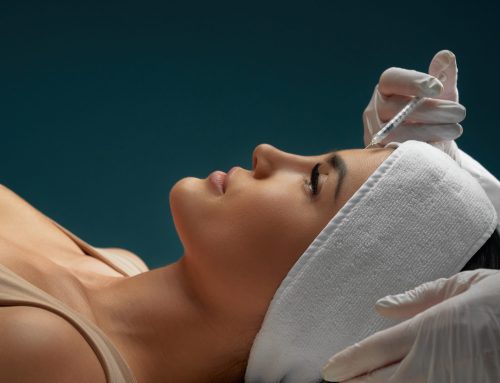
The reasons why more men are having facial plastic surgery are as unique as the men themselves. Many Baby Boomers have kept their bodies in good shape with exercise and an active lifestyle, and want their aging facial appearance to look similar. Other men want to restore a youthful appearance to stay competitive in today’s job market. Some want to address signs of stress and sleeplessness associated with parenthood.
Dr. Douglas Stevens, a facial plastic surgeon in Fort Myers, has noticed a significant uptick in requests for male plastic surgery at his practice. He enjoys working with male facial plastic surgery patients and helping them achieve their desired results. However, there are special considerations that Dr. Stevens takes into account when approaching surgical cases for men.
These considerations guide surgeons to tailor techniques that preserve a strong jawline and masculine facial contour while aiming for a natural look with minimal downtime. When people learn about options in facial cosmetic procedures for men, they gain a clearer sense of how unique skin and healing patterns can influence results.
“While women remain the primary demographic for plastic surgery, men are increasingly seeking cosmetic procedures, with 92 percent of AAFPRS surgeons reporting male patients in their practice, with blepharoplasty, rhinoplasty being the most popular” Zein Obagi, MD
Source: American Academy of Facial Plastic and Reconstructive Surgery (AAFPRS) 2024 Survey
Male facial skin is thicker and more vascular
One of the most significant anatomical differences I encounter when performing facial plastic surgery on male patients is the distinct characteristics of masculine facial skin. Male facial skin is typically 20-25% thicker than female skin, with a higher density of collagen fibers and a more robust underlying structure. This increased thickness provides certain advantages during surgical procedures, as the skin can better support surgical manipulation and tends to heal with improved structural integrity.
The increased vascularity in male facial skin presents both opportunities and challenges during surgery. While the enhanced blood supply promotes excellent healing and reduces the risk of tissue necrosis, it also requires modified surgical techniques to manage bleeding effectively. During procedures like facelifts or eyelid surgery, I must take extra care with hemostasis and may use specialized techniques to minimize bruising and swelling. The good news for my male patients is that this robust blood supply typically leads to faster healing times and excellent long-term results.
Additionally, the sebaceous glands in male skin are generally larger and more active, producing more oil. This can actually be beneficial for post-surgical healing, as the natural oils help maintain skin hydration and flexibility during the recovery period. However, it also means that male patients may be more prone to developing certain types of scarring if proper post-operative care isn’t followed meticulously.
Facial hair patterns
Facial hair growth patterns present unique challenges that require careful surgical planning and execution. The beard area, including the cheeks, jawline, and neck, contains hair follicles that extend deep into the dermis and subcutaneous tissue. When performing procedures like facelifts, neck lifts, or facial contouring, I must carefully navigate around these follicles to preserve natural hair growth patterns.
One of the most critical considerations is maintaining the natural hairline and beard boundaries. During a facelift, for example, incisions must be strategically placed to avoid disrupting the natural flow of facial hair. I often modify traditional incision patterns to ensure that when hair grows back, it appears completely natural. This might mean placing incisions slightly higher or lower than typical female facelift patterns, or using different closure techniques that don’t interfere with follicle orientation.
The density and coarseness of male facial hair also affects healing. Hair follicles can sometimes become temporarily disrupted during surgery, leading to patchy hair growth during the initial healing phase. I always inform my male patients that they may experience temporary changes in hair growth patterns for several weeks to months following surgery, but with proper technique, normal growth typically resumes completely.
For patients considering laser treatments or chemical peels in conjunction with surgical procedures, the presence of facial hair requires modified protocols and sometimes staged treatments to achieve optimal results while preserving the integrity of hair follicles.
Scarring is difficult to hide
Unlike female patients who often have longer hairstyles and regularly wear makeup, men face unique challenges when it comes to concealing surgical scars during the healing process. This reality significantly influences my approach to incision placement and surgical technique selection for male facial plastic surgery patients.
Traditional facelift incisions that extend into the hairline work well for women with longer hair, but men with shorter hairstyles require more discrete incision patterns. I often utilize what’s called the “short scar” technique or modify incision placement to follow natural skin creases and boundaries that will be less visible with typical male grooming habits. For procedures like blepharoplasty, I’m particularly meticulous about incision placement in the natural eyelid creases where shadows naturally occur.
The neck area presents particular challenges for male patients, as men typically don’t wear high necklines or scarves to conceal healing incisions. This is why I often recommend the deep plane technique for facelifts in men, which allows for significant improvement with shorter, more discrete incisions. Additionally, I may suggest modifications to a patient’s shaving routine during healing to avoid irritating incision sites.
I’ve found that male patients often heal with slightly different scar characteristics than women, sometimes developing thicker or more prominent scars initially. However, with proper post-operative care, including the use of silicone sheets, specialized creams, and sometimes laser treatments, these scars typically mature very well. The key is setting realistic expectations about the initial healing period and ensuring patients understand the importance of following post-operative instructions precisely.
Certain techniques can “feminize” the facial features
Maintaining masculine facial characteristics is perhaps the most critical aspect of male facial plastic surgery. The anatomical differences between male and female faces are subtle but significant, and using standard “one-size-fits-all” techniques can inadvertently create feminine features that look unnatural on a male face.
Male faces typically have stronger, more angular features with prominent brow ridges, wider jawlines, and less curved cheekbones. When performing procedures like facelifts, I must be careful not to over-elevate tissues in ways that round out the natural angularity of masculine features. The vector of tissue movement is crucial – while women often benefit from more vertical lifting that creates gentle curves, men require techniques that preserve and enhance the natural angular contours of their facial structure.
Brow positioning is particularly important in male patients. The male brow sits closer to the eye and has less of an arch than the female brow. Over-elevation during brow lift procedures can create an unnatural, surprised appearance that feminizes the face. I often use conservative lifting techniques and may combine surgical lifting with strategic Botox placement to achieve natural-looking results.
Similarly, cheek augmentation in men requires a different approach than in women. While women often benefit from enhancement of the “apple” of the cheek for a youthful, rounded appearance, men typically look better with augmentation along the zygomatic arch (cheekbone) that enhances the angular, structured appearance of the midface.
Even skin treatments require gender-specific considerations. Over-aggressive laser treatments or chemical peels can create skin that’s too smooth or refined, potentially feminizing the overall appearance. I often recommend more conservative treatment protocols for men that improve skin quality while maintaining the slightly more textured, masculine skin characteristics that look natural and age-appropriate.
The goal is always enhancement that looks completely natural – as if my patient simply won the genetic lottery rather than had cosmetic surgery performed.


